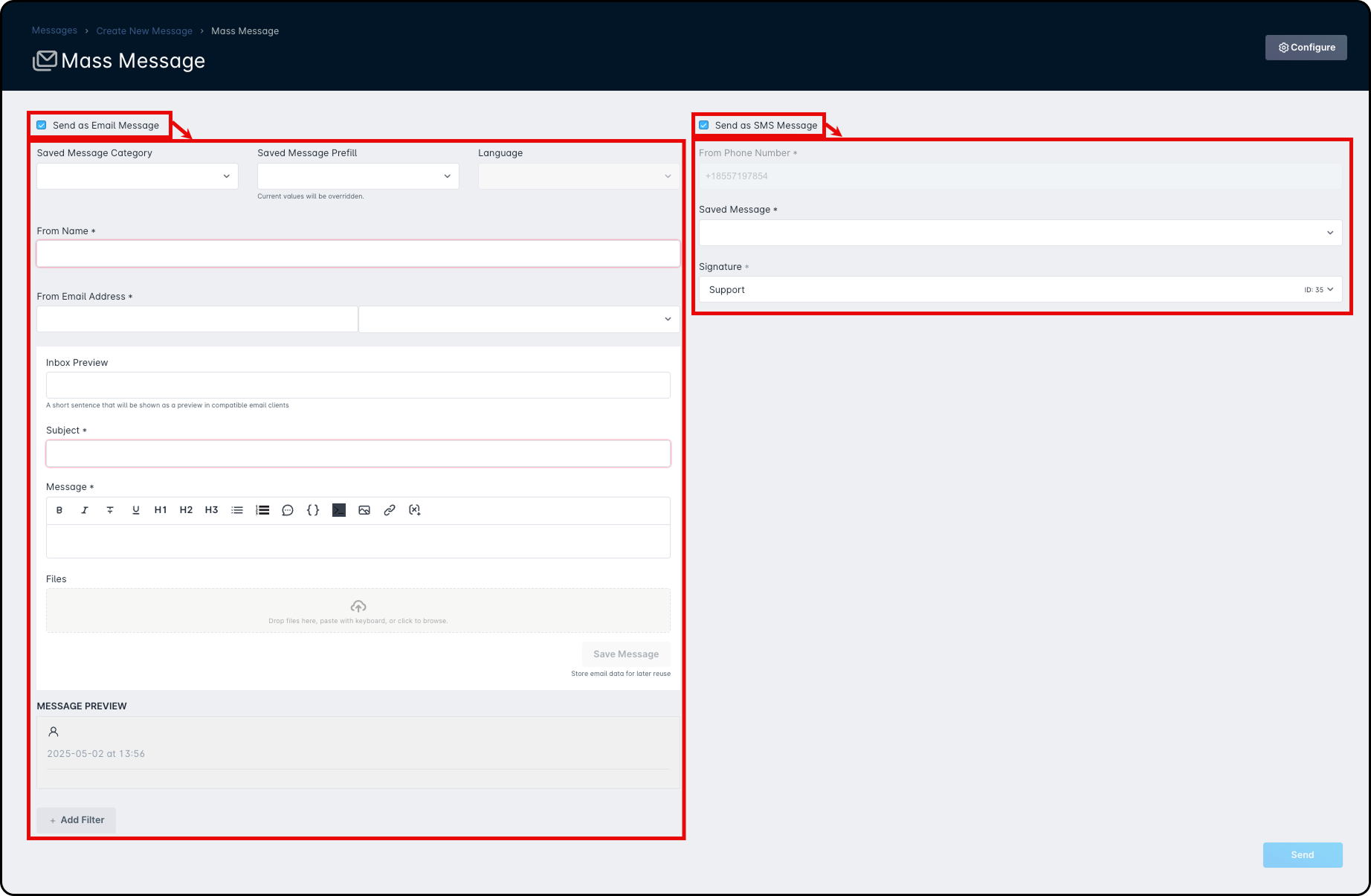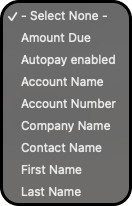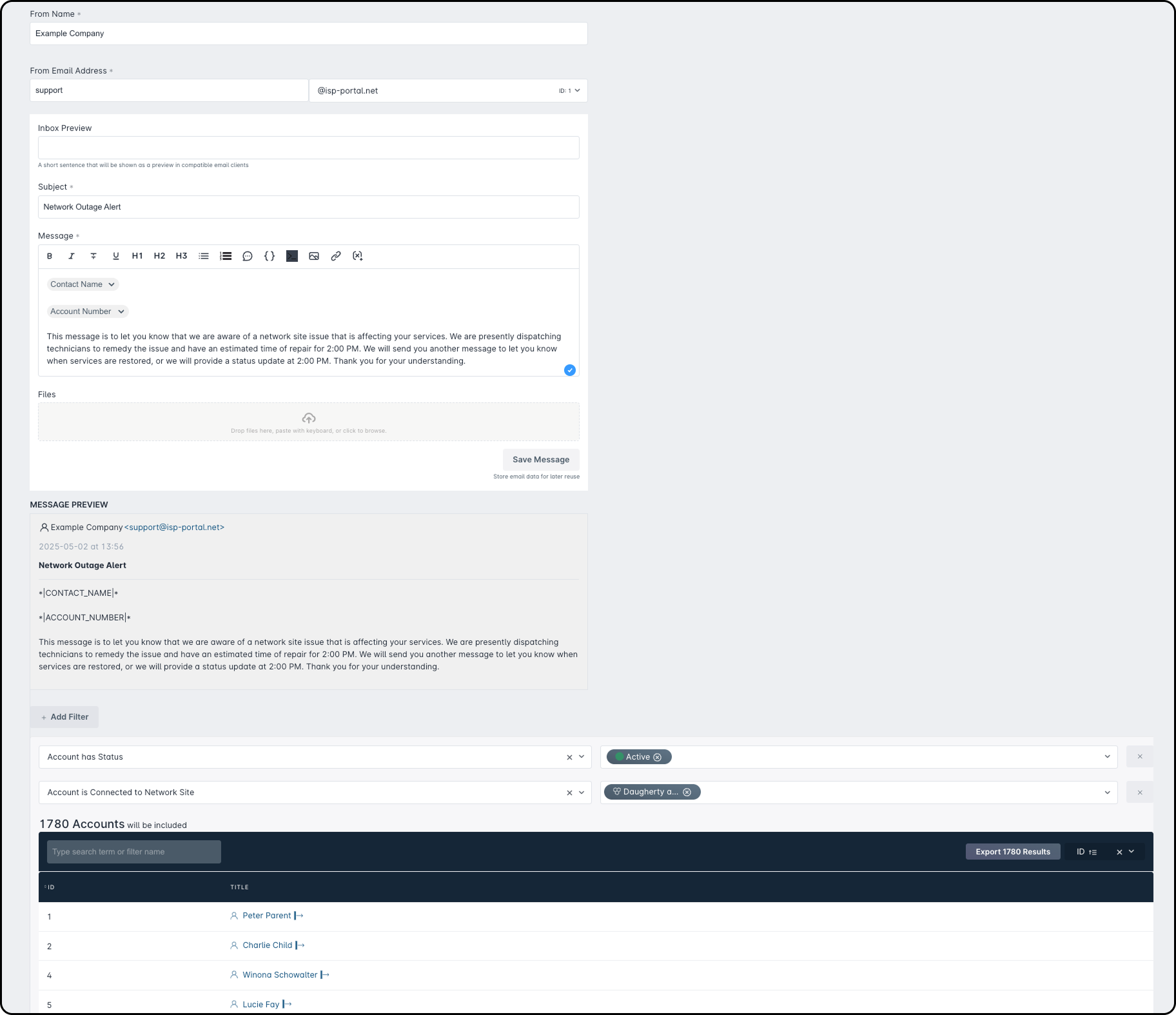Our Products & Services
Getting Started
First Time Setup
Getting Started With Jobs
Getting Started with Accounts
Getting Started with Inventory
Getting Started with Ticketing
Setting Sonar up for Billing
Baseline Configuration
How To: Using Sonar's Customer Portal
User Specific Resources
Accounts
Account Groups: Overview & Example Use Cases
Account List View: Overview
Account Management View: Overview
Account Overview Customization
Account Statuses: Overview & Example Use Cases
Account Types: Overview & Example Use Cases
Anchor & Linked Serviceable Addresses: Overview and Best Practices
Archiving an Account: Overview
CPUC Fixed Broadband Deployment by Address
Child Accounts: Best Practices & How Tos
Creating a New Account
Direct Messages: Overview
Disconnecting an Account
Disconnection Reason Management: Overview
Exploring Task Groups
FCC Broadband Data Collection (BDC) Filings: How Sonar Can Help
FCC Data Exports: General Overview and Usage
Future Serviceable Addresses: Overview
Lead Intake Form Processing
Notes: Best Practices & Use Cases
Scheduled Events: Overview & Use Cases
Serviceable Addresses: Overview and Usage
Specify Account ID upon Creation
Tasks & Task Templates: Overview
Using Sonar's FCC Broadband Label Generation Tool
Billing
ACH Batching: Overview
Accounts in Vacation Mode
Avalara: Overview & Setup
Batch Payments & Deposit Slips: Overview
Billing Calculator
Billing Defaults
Billing Settings
Building Packages
Building a Data Service
Canadian ACH tool
Changing Service Pricing in Sonar: Best Practices
Considerations When Using Avalara with Voice Services
Creating Discounts for Services and Packages
Delinquency Billing Best Practices
Delinquency Exclusions: Overview and Use Cases
Dual Data Services: Overview
Email Invoice Batch: Overview
General Ledger Codes: Overview
General Transactions: Best Practices
How Sonar Prorates Billing
How to Take Bank Account Payments
How to: Adding a Service to an Account
Invoice Templates: Overview
Leveraging PayPal as a Payment Method in Sonar
Manual Transactions
Multi-Month Billing & Multi-Month Services
Print to Mail
Printed Invoice Batches: Overview
Services: Overview
Setting Up Payment Methods and Taking Payments
Setting up Bank Account & Credit Card Processors
Taxes Setup
Usage Based Billing Policies: Overview and Usage
Usage Based Billing Policy Free Periods: Overview and Usage
Using Tax Exemptions - How To
Communication
Communications: Call Logs Overview & Best Practices
Communications: Messages Overview
Email Variables & Conditions
Message Categories: Overview & Use Cases
Phone Number Types: Overview and Use Cases
Saved Messages: Overview
Setting up an Outbound Email Domain
Trigger Explanations
Triggered Messages: Setup
Using Outbound SMS
Using the Mass Message Tool
Companies
How to: Setting Up a Company in Sonar
Managing Multiple Companies in Sonar: Best Practices
Rebranding your Sonar Instance
Financial
Contract Templates
Invoice Attachment Use Cases & PDF Examples
Invoice Messages: Overview & Use Cases
Invoices in Sonar: Examples, Creation & Contents
Integrations
Atlas Digital CORE Integration
Calix Cloud Data Field Mappings
Calix SMx Integration: Overview
CrowdFiber Integration
External Marketing Providers
GPS Tracking Providers: Overview
GoCardless Integration: Overview & Setup
How to Connect Cambium to your Sonar Instance
How to Connect Preseem to your Sonar System
How to: Using Webhooks in Sonar
Integrating with Calix Cloud
RemoteWinBox - Integration with Sonar
Sonar Retain: AI-Powered Customer Retention & Quality Intelligence
The Sonar Field Tech App
Tower Coverage Integration: Overview
VETRO FiberMap V2 Integration: Overview
VETRO FiberMap V3 Integration: Overview
Webhooks in Sonar: Basic PHP Example
iCalendar Integration
Inventory
Inventory List View: Overview
Inventory Model Management: General Overview
Network Inventory: How-to & Usage Guide
Segmentable Inventory: How-to & Usage Guide
Setup of Inventory: Manufacturers, Categories, and Assignees
Tracking and Using Consumable Inventory
Jobs
Applying Task Templates to Jobs
Edit Job Options
Example Jobs & Templates
Geofences: Overview
Job Types: Best Practices
Jobs and Scheduling: Overview
Scheduling How-to: Creating and Booking a Job
Scheduling Week View: Overview
Setting Up Schedules General Overview
Mapping
Misc.
Combining Custom Fields & Task Templates for Information Storage
Custom Fields Overview & Use Cases
Custom Links: Overview
Task Templates Overview & Use Cases
Monitoring
Building Alerting Rotations
Building a Monitoring Template
Poller Troubleshooting
Pollers: General Overview, Deployment Strategy, Build Out & Setup
Networking
Adtran Mosaic Cloud Platform Integration: Overview
Assigning RADIUS Addresses
Assigning an IP Address Using Sonar's IPAM: How to
Automating IP Assignments, Data Rates, and Network Access in Sonar
Building Address Lists
Building RADIUS Groups
Building a Device Mapper
Cable Modem Provisioning
Controlling Customer Speeds with Sonar: General Overview
DHCP Delivery
Data Usage Available Methods
Finding your OIDs
FreeRADIUS 3: Build-Out & Integration
How Sonar Communicates - Egress IPs Explained
IP Assignments & Sonar
IPAM: Basic Setup
IPAM: Overview
LTE Integration
MikroTik as an Inline Device: Integration With Sonar
MikroTik: Controlling Access
MikroTik: Controlling Speeds
MikroTik: Setting Up a Sonar Controlled DHCP Server
Netflow On-Premise Integration: Setup and Overview
Network Dashboard: Overview
Network Sites: Management View Overview
PacketLogic: Integration With Sonar
Pulse, Polling, and PHP
RADIUS: Build-Out & Integration with Sonar
RADIUS: Building Reply Attributes
Setting Up CoA Proxy
Sonar Flow
Sonar IP Addressing
Using Multiple Network Devices in Sonar
Purchase Orders
Release Notes
Reporting
Enhanced Business Intelligence - Tips & Tricks for Advanced Users
How To Enhance Your Reporting With Custom Field Data
Report Licenses
Sonar's Business Intelligence: Overview
Understanding Sonar Reports
Using Sonar DataConnect to Connect BI Applications with Your Sonar Instance
Security
Application Firewall: General Overview and Best Practices
Auth0: Overview
Multi-Factor Authentication: Overview
Password Policy In Depth
Removing a Terminated Employee In Sonar
Role Creation using GraphiQL
User Role Creation & Best Practices
Users: Overview
Sonar Billing
sonarPay
sonarPay Canada Disbursements: Overview
sonarPay Chargebacks & Disputes: Overview
sonarPay Disbursements: Overview
sonarPay Monthly Statement: Overview
sonarPay Overview
sonarPay Reversals, Voids, & Refunds: Overview
sonarPay: Token Migration Process
System
A Deeper Dive into the New Sonar API
API Calls Using Third Party Applications: Personal Access Tokens
Browser Compatibility and Minimum Hardware Requirements for Sonar
Consuming the Sonar API
Controlling Your Landing Page: Personal Preferences
Customizing Your Customer Portal
Date/Time Picker: Overview
Dynamic Time Zones in Sonar
Filtering: Overview
Frequently Used Terms
Getting Your Data into Sonar
GraphQL Rate Limiting Overview
How To Use GraphiQL to Understand the Sonar API
How Your Data is Backed Up
How to Best Use Global Search
Interacting with Files via the API
Introducing the New Sidebar
Main Menu: Overview
Mutations in the Sonar API
Notification Preferences
REST API Wrappers for V1 Compatibility
SMS Notifications
Sonar's Rich Text Editor
System Settings: Overview
The New Sonar API
Troubleshooting the Customer Portal
Upgrading your Ubuntu OS - Customer Portal Upgrades
User Profile: Your Personal User Settings
Ticketing
Advanced Ticketing Features
Canned Replies Examples & Templates
Canned Reply Categories
Exploring Ticket Groups
How Sonar Manages Spam Tickets
How to Integrate Inbound Mailboxes with Slack
Inbound Mailboxes Example Build
Ticket Category Families & Ticket Categories: Overview
Ticket Resolution Reasons: Overview
Ticketing: Overview
Using Parent Tickets
Voice
API Changes for Voice Billing
Best Practices to Remain CPNI Compliant
Billing Voice Services in Sonar
Deploying Voice Services in Sonar
Working With the Sonar Team & Additional Resources
Sonar's Security Practices & Certifications
Sonar and General Data Protection Regulation (GDPR)
Sonar's Security Strategies
Technical Security Overview
Best Practices for Fast Tracking a Support Request
Feedback Portal / Suggest a Feature
Learning with Sonar: Tools and Resources
New Client Training Overview
Sonar Casts Table of Contents
Submitting Bugs vs. Feature Requests
The Sonar Community Forum
The Sonar Status Page
Third Party Customer Support Referrals
Table of Contents
- All Categories
- Communication
- Using the Mass Message Tool
Using the Mass Message Tool
 Updated
by Mitchell Ivany
Updated
by Mitchell Ivany
Read Time: 6 mins
When to Use a Mass Message
The Mass Message tool lets you send Email or SMS messages to many customers at once, saving time compared to selecting each recipient manually. Messages are sent based on filters you choose — only accounts that match all selected filters will receive the message.
Mass Messages are often used to share:
- Network updates like maintenance or outages.
- Promotions or limited-time offers.
- Service price increases.
Creation Fields

Mass email messages are more flexible, letting you customize fields freely. The “From Name” and “From Email Address” are what recipients will see and can be changed anytime while creating the message. You can also add an attachment in the Files section.
More information on setting up the message and filters is covered in the sections below.
Creating the Message Content

The message content uses the same tools as Saved Messages, letting you include variables to personalize messages for many contacts at once.
Here are the variables you can use in a Mass Message:

- Amount Due: Shows how much the customer owes on unpaid invoices — helpful for messaging delinquent accounts.
- Autopay Enabled: Lets you show or hide parts of the message based on whether the account uses auto-pay.
- Account Name: Adds the customer’s account name to the message.
- Account Number: Adds the customer’s account number.
- Company Name: Adds your company’s name.
- Contact Name: Adds the full name of the contact receiving the message.
- First Name / Last Name: Inserts the contact’s first and last name from their profile.
Common Mass Messages
Network Outage
Subject: Network Outage A-002 Tower
Body:
Hello *|FNAME|*,
This message is to let you know that we are aware of a network site issue that is affecting your services. We are presently dispatching technicians to remedy the issue and have an estimated time of repair for 2:00 PM. We will send you another message to let you know when services are restored, or we will provide a status update at 2:00 PM.Thank you for your understanding

Using Account Filters
Filters let you choose which accounts or contacts will receive your mass message. You can add multiple filters to narrow down your audience.
To add a filter, click “Add Filter”, select a filter from the dropdown, and set its value.
The table below lists all available filters and what they do.
Account has IP from Pool | This filter lets you choose one or more IP Pools to target only the accounts linked to them. |
Account has IP from Subnet | This filter shows all subnets, so you can select one or more to target only accounts linked to them. |
Account has Service | This filter lets you pick one or more Services from your instance to target only accounts using them. |
Account has Status | This filter shows all account statuses in your instance, so you can select one or more to target accounts with those statuses. |
Account is Associated with Item | This filter shows all Inventory Items in your instance, letting you select one or more to target accounts linked to them. |
Account is Connected to Network Site | This filter shows all active Network Sites, so you can select one or more to target accounts connected to them. |
Account is Delinquent | This filter targets all accounts marked as delinquent in your instance. |
Account is in Group | This filter lets you message accounts in a specific Group. It shows all active groups in your instance. |
Account is of Type | This filter shows all account types in your instance, so you can select one or more to target. |
Contact has Messaging Category Set | This filter lets you target specific account contacts by choosing a Messaging Category from the list. |
Contact has Preferred Language set | This filter lets you target customers based on the Preferred Language set in their contact settings. |
Example Use Case
1. Go to Communications → Messages → New Message → Mass.
2. Fill in the message details about the scheduled maintenance.
3. To target only the customers on the AP, click Add Filter.
4. In the first dropdown, choose Account is Associated with item.
5. In the second dropdown, select the AP that’s affected.
This ensures only customers connected to that AP receive the message.

To check which customers the Poller sees on the AP, go to the Network Site and click on Connected Devices for that AP.
Testing Mass Messages Before Sending
Sometimes you may want to test your message before sending it to customers. While there’s no built-in preview button, you can still test it by following a few simple steps.
Before starting, make sure you have these 3 things set up:
- An account group for testing purposes (for example, “Mass Message Testing”).
Expand here for help creating an account group.
To create the account group to test with:
1. Go to Settings → Accounts → Account Groups.
2. Click Create Account Group at the top.
3. Enter a name (for example, Mass Message Testing).
4. Click Create. - A fake customer account that can be used for testing purposes.
Expand here for help creating a test account.
To create a test customer account:
1. Go to the Accounts screen.
2. Click Create Account.
3. On the first page, fill in the required fields. For Groups, choose the test group you created earlier.
4. On the second page, enter a name and your email as the primary contact.
5. Click Create.
Note: If you have required custom fields, you’ll need to complete them on the third page before you can finish. - A contact on the fake customer account that has your email address.
Expand for help creating the account contact.
If you're creating a new account, this is already covered in step 2 above.
If you’re using an existing test account and skipped that step, follow these steps to add your email:
1. Open the test account.
2. Go to the Contacts tab.
3. Click Create at the top.
4. Enter a name and your email in the Email Address field.
5. Click Create.
Once everything is set up, create the mass message you want to send. Add the filter “Account is in Group” and select your test group (from step 3). Make sure only your test account appears, then click “Send Mass Message”. The message will be sent to the email on that test account.
After receiving the message, review it. If changes are needed, update it directly from the same screen. When you’re ready to send it to customers, remove the test group filter and add filters for your actual audience. Then click “Send Mass Message” to send it out.

